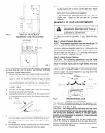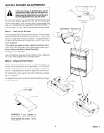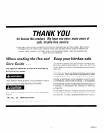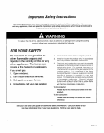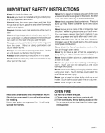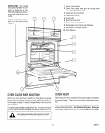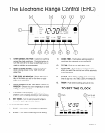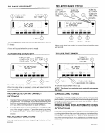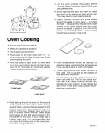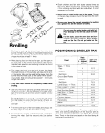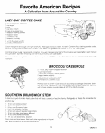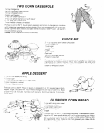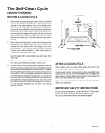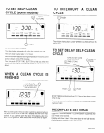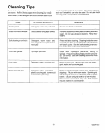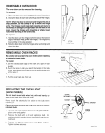
Oven Cooking
l
Always follow recipe carefully.
l
Measure ingredients properly
l
Use proper pan placement
l
Place pans on the oven racks with 1%” - 2”
of air space on all sides of each pan. Avoid
overcrowding the oven.
l
Pans too close to each other, to oven walls
or to the oven bottom block the free move-
ment of air. Improper air movement causes
uneven browning and cooking.
2
cake layers
4
cake layers
9 Most baking should be done on the second
shelf position from the bottom. When baking
several items, use two shelves placed on the
second and fourth rack positions from the
bottom of the oven. Stagger pans so that no
pan is directly above another. Bake angel
food cakes on the first shelf position from
the bottom of the oven. If your range has a
folding oven rack it is recommended that
you place the folding rack in the lower posi-
tion when using both racks.
l
Let the oven preheat thoroughly before
cooking baked products. Allow lo-15 min-
utes preheat time.
l
Avoid opening the door too often to check
the food during baking as heat will be lost.
This may result in poor baking results.
l
Cakes, cookies, muffins, and quick breads
should be baked in shiny pans - to reflect
the heat - because they should have a light
golden crust. Yeast breads and pie crusts
should be baked in glass or dull (non-shiny
pans) - to absorb the heat - because they
should have a brown, crisp crust.
Oven temperatures should be reduced 25
degrees below recommended temperatures
if you use dark pans or oven proof glass.
There may be some odor when the oven is
first used. This is caused by the heating of
new parts and insulation.
Do not cover the oven bottom or an entire
oven rack with foil. The foil can block nor-
mal heat flow, cause cooking failures, and
damage the oven interior. In gas ranges the
use of foil in the oven could cause incom-
plete gas combustion.
GOVCOl-1
13



